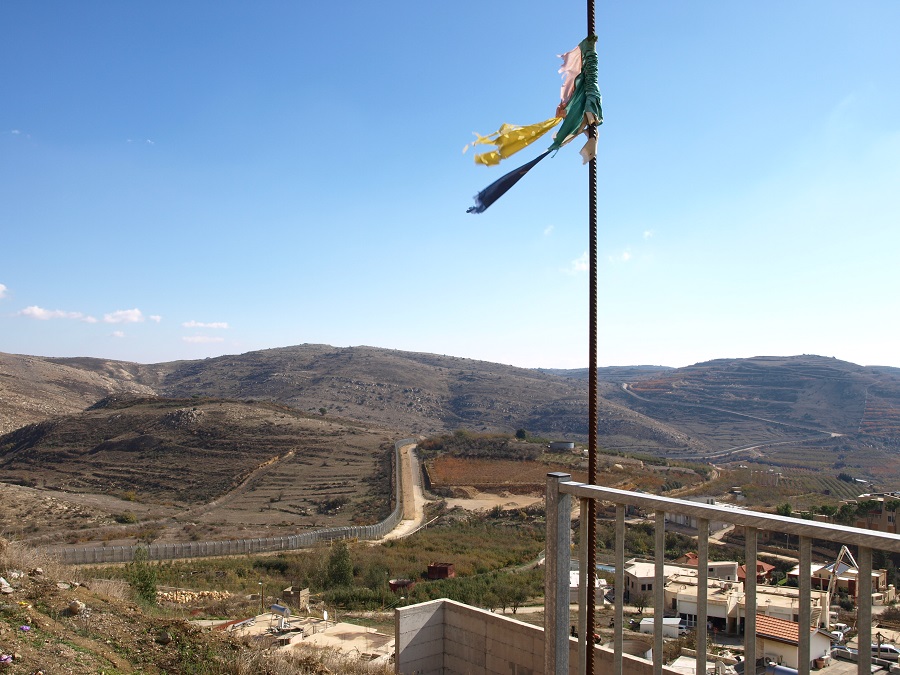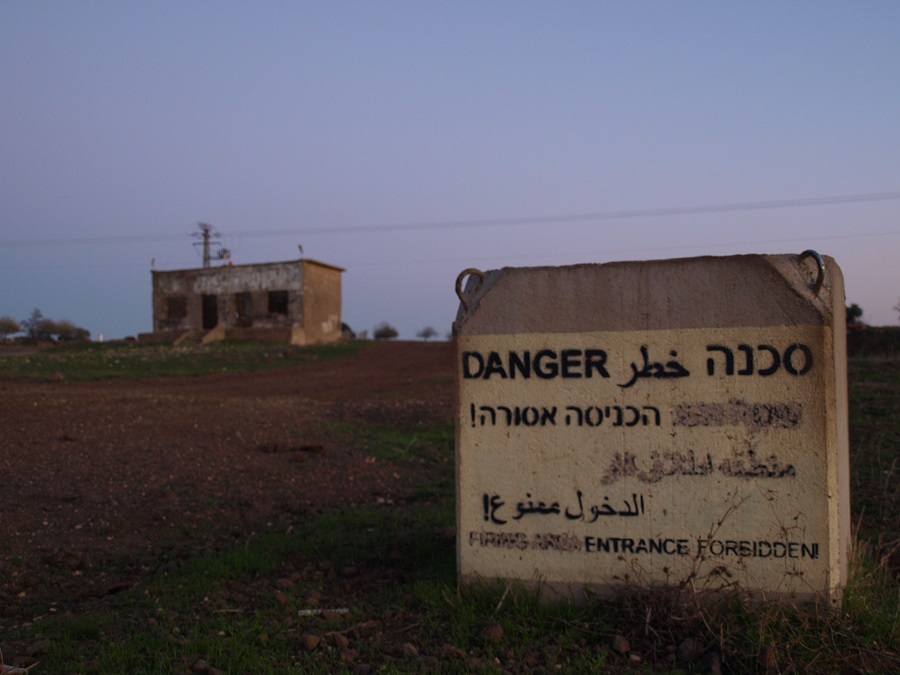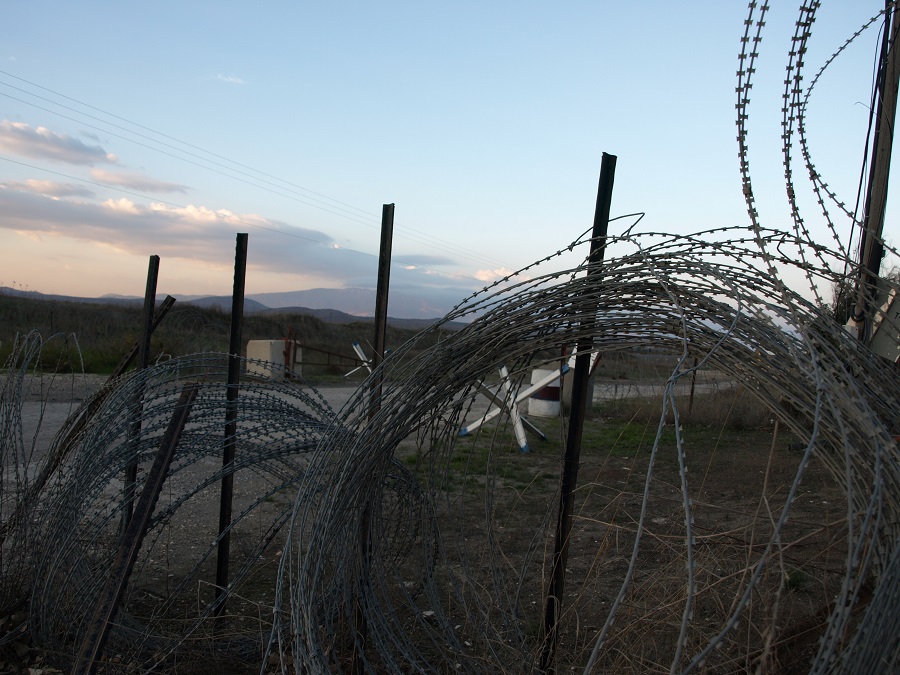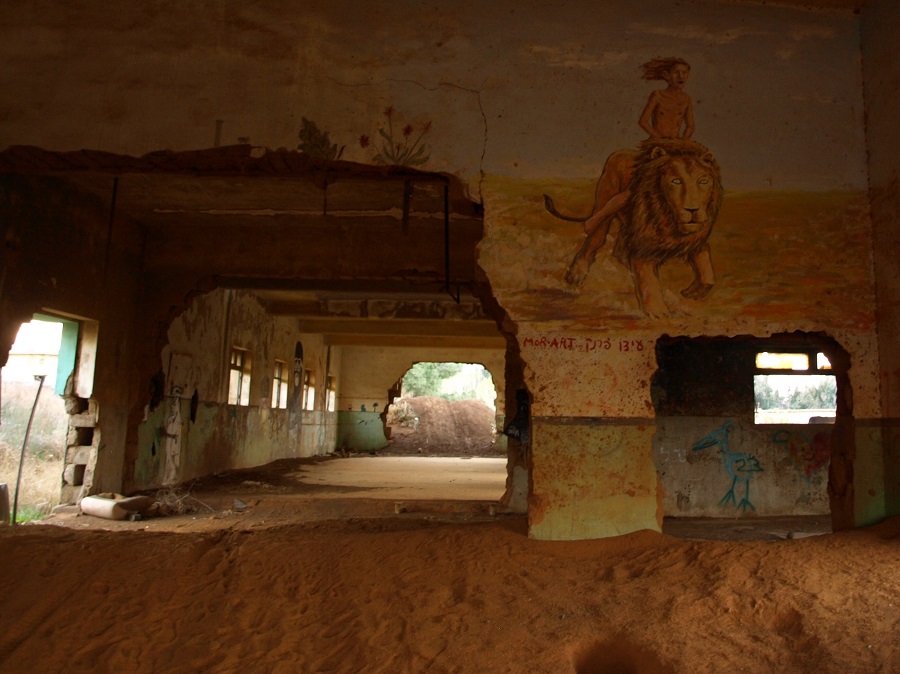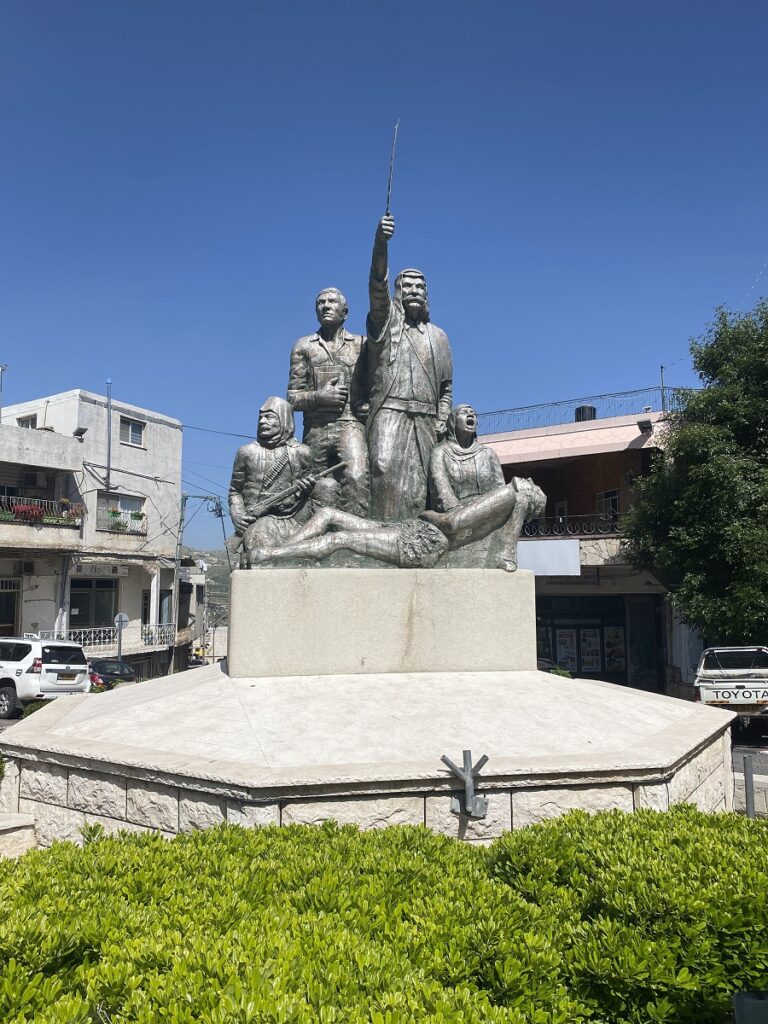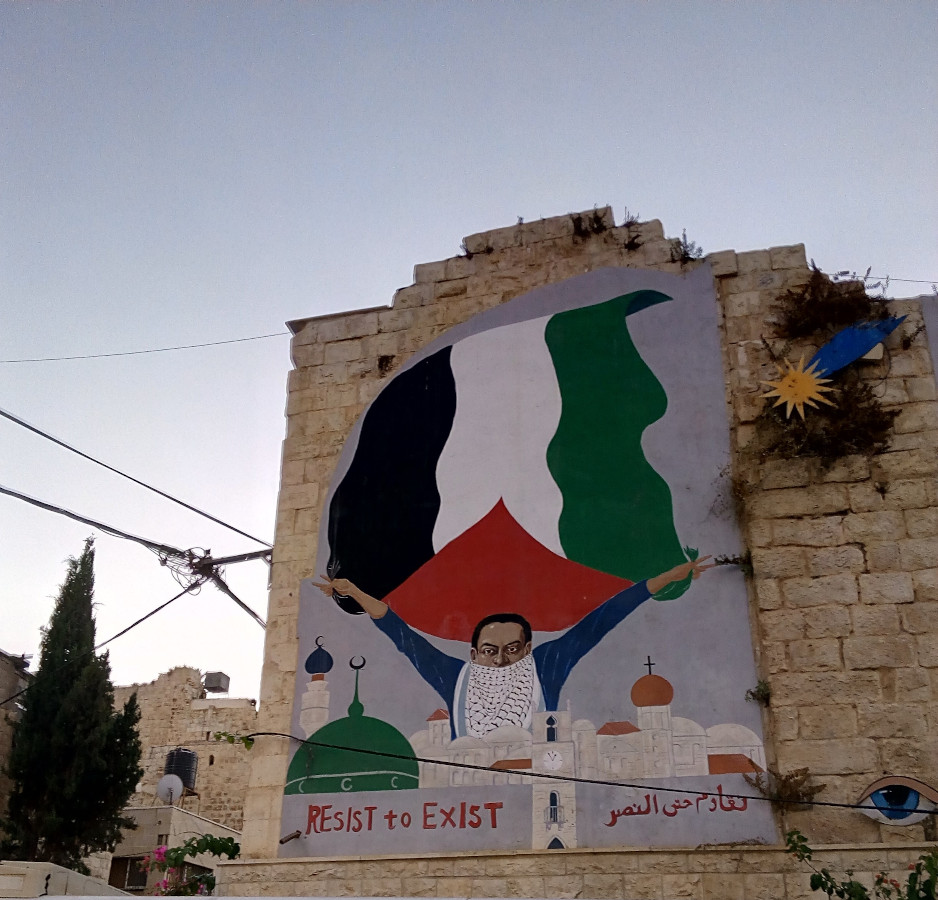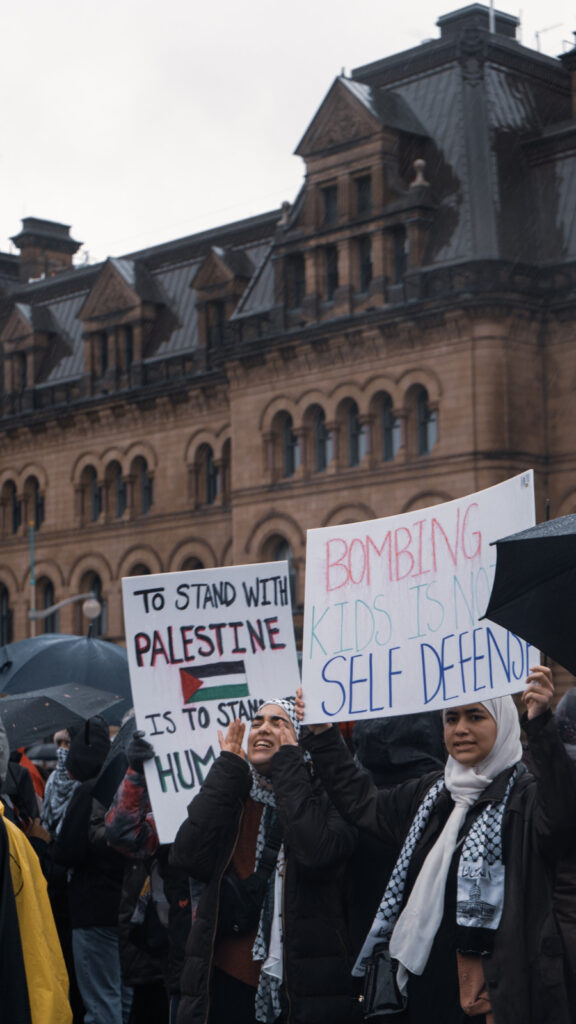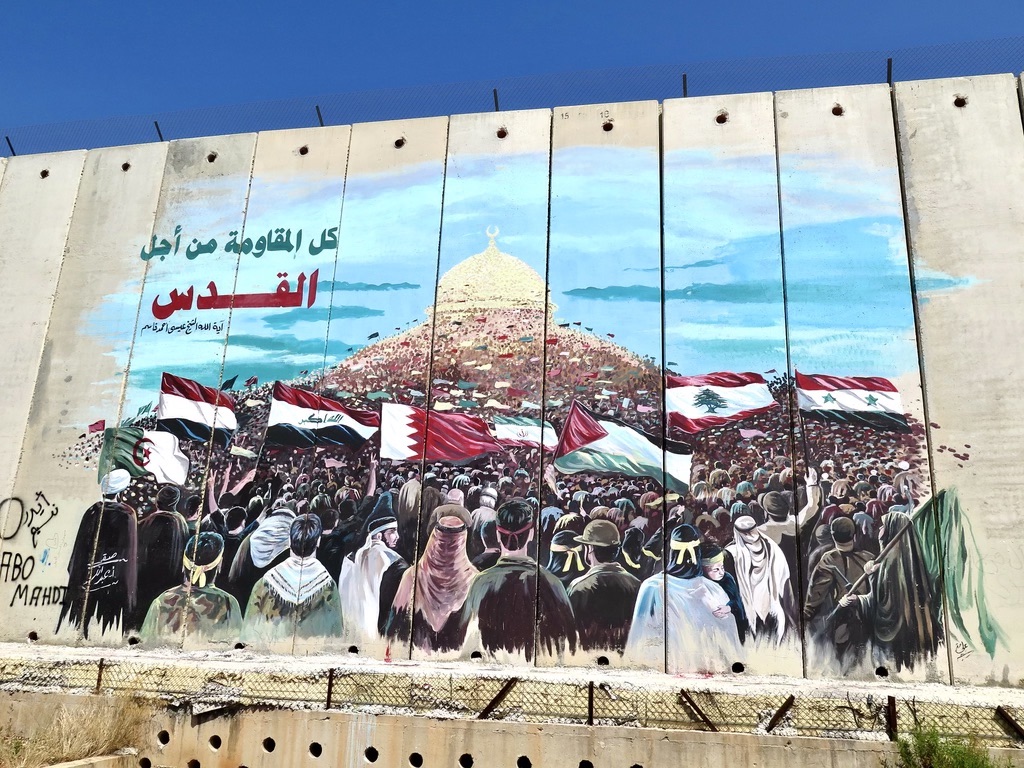
Israel’s wall and de facto border with southeast Lebanon. Writing reads: “All resistance for the sake of Jerusalem.” Photo taken by author in summer 2023 near Adaysseh, Lebanon.
“I cannot listen to the sound of the warplanes anymore, it sounds like they are flying over our roofs,” as a resident of a south Lebanese border village described the situation in South Lebanon on October 8. She, her family, and her extended family evacuated their villages of Mais el Jabal and Blida shortly afterwards. Since October 7, Hezbollah and Israel have been steadily increasing hostilities on Lebanon’s southern border, fueling fears among its inhabitants and raising the prospect of a full-on war between the two, which would be devastating for the region. It is imperative that the history of Israel’s bombardments, occupation, invasions of Lebanon, and the repeated forced displacement of its residents, is put at the forefront of our understanding of why the Lebanese front remains an active battleground.
The politics of displacement in South Lebanon
Not long after Hamas’ October 7 attacks, Israel deployed military vehicles northward, and reinforced the militarization of their northern border. War planes were constantly flying over South Lebanon and flare bombs were fired over the villages during the first few nights already. Hezbollah officially entered the battle on October 8, by targeting three Israeli military positions in the occupied Shebaa farms. Israel responded to this incident, and the violence has been increasing ever since. Since the beginning of the war on Gaza and as of January 19, Israel has launched at least 3,600 strikes on South Lebanon. In comparison, there have so far been about 920 strikes launched from Lebanon, mainly by Hezbollah. Most of Israel’s attacks have been focused on the area about 5-10 kilometers from the Israeli border; as a result more than 88,000 residents of this area have vacated their homes in the largest escalation of hostilities between Israel and Lebanon since the end of the 2006 war. As events unfolded, Israel moved its inhabitants of the northern border into shelters in other areas of the country.
Since the beginning of the hostilities between Hezbollah and Israel on October 8, nearly 200 people have been killed in South Lebanon by Israeli strikes. At least 40 of those killed are civilians and one Lebanese army soldier—the others, at least 144, are mostly Hezbollah members or fighters. Israel has targeted villages and towns throughout the south Lebanese border area. Israel has targeted Hezbollah, Lebanon’s most powerful armed political movement, but their attacks have also struck a wide range of civilians and state infrastructure. Over 34 attacks have been recorded against the Lebanese army, killing one soldier. Israel has attacked and killed civilians, explicitly and repeatedly targeted journalists, and struck houses and residential areas, public roads, mosques, churches, schools as well as a hospital, and health centers.
It is often the most vulnerable segments of the population that are forced to stay behind. The elderly, poor, and disabled are those who are physically unable to flee their homes, and therefore become victims of Israeli shelling and bombs. This is a tragedy all-too-well demonstrated in Aitarun, a village in the southeastern tip of Lebanon, where three young children and their grandmother were killed by an Israeli airstrike as they were evacuating. Their mother survived with critical injuries. Human Rights Watch called this attack an “apparent war crime.” On December 20, a civilian whose car broke down in the Marjayoun district was killed by an Israeli sniper, and a 70-year-old civilian was killed by an Israeli strike.
The economic and human tolls of the war
While aid organizations and individuals are providing some immediate relief, especially for those in shelters, the overall public awareness of the difficulties of the displaced is slim. The Lebanese government’s emergency plan is inadequate to say the least; it has not helped with evacuating or finding housing for its displaced. It has made some temporary shelters available for only a little over a thousand IDPs. The proportion of IDPs in collective shelters—mostly sections of still operating schools, or unfinished buildings—accounts for only 2 percent. The majority of the displaced are staying with close and extended relatives throughout Lebanon while others are renting a place independently, among other options. The needs of the displaced are less visible to the public. The ones who are renting housing are exposed to exorbitant rents without any oversight. If help is available, it is not advertised properly to people eligible to access it. This situation affects more than just Lebanese citizens: Syrians, both residents and refugees, many of whom have already been forcibly displaced multiple times and have fewer relatives in Lebanon that could host or support them.
The financial, physical, and psychological hardship on the displaced in the midst of Lebanon’s most severe economic crisis cannot be overstated. A great proportion of the southern Lebanese inhabitants are farmers and day laborers. They depend on their land for sustenance. Many find themselves traveling back and forth to the south, amidst heightened danger, especially for work. Some farmers who hold livestock have to stay or visit their property on an almost daily basis to care for their animals, despite ongoing attacks. The current conflict hit in the midst of the olive harvest season, on which many depend for at least part of their livelihoods. Villagers’ careful preparation of their muneh (preserved goods) is what traditionally gets them through the winter. This year, many villagers missed out on harvesting, preserving, and pressing their olives during this time, as well as preparing other kinds of preserves. Israel’s indiscriminate use of white phosphorus bombs in the fields throughout South Lebanonis further taking a vast environmental toll that will likely take years to recover from. Furthermore, December and January mark the season in which tobacco farmers sell their dried and packed up tobacco.
In addition to the war’s economic impact on South Lebanon, 52 schools had to close in the area, many since October 8. Seventeen of these are public schools whose closure impacts more than 6,000 children. An emergency plan by the caretaker Lebanese government to allow public school students to attend schools in their area of displacement, has only accommodated about 1,000 children.
The social impact of the war and displacement
This is not the first time South Lebanon had to face such scenarios, and its plight has still been misunderstood and downplayed by parts of the Lebanese public. The Israel Defense Forces has established a heavy military presence along the Lebanese border, and given the decades-long history of wars, invasions, occupations, and covert military action, the threat of another conflict had always loomed for people living in the area. Even in more “peaceful” times, including before October 7, the Israeli air force had conducted near daily incursions into Lebanese airspace, illegal under international law, sometimes deep into Lebanese territory. A report found that between 2006 and 2021, the Israeli military violated Lebanese airspace over 22,000 times. It used Lebanese airspace to strike Syria, such as on Christmas eve 2020 when fighter jets flew at low altitude over Beirut terrifying residents still reeling from the Beirut port explosion. Israel’s regular military exercises, sometimes conducted during key political moments, such as right before the Lebanese elections in 2009, are another form of intimidation and harassment.
The frequent and loud sound of cluster bombs being demined by the Lebanese army and the United Nations Interim Force in Lebanon (UNIFIL) further adds to the sound of the threat across the border. Israel dropped an estimated 4 million cluster munitions on Lebanon during the 2006 war, 90 percent of them in just the last three days of the conflict. It is estimated that one fourth of those bombs did not explode. Many farmers risk their lives working in fields contaminated with unexploded bombs.
Decades of continuous displacement
This current war and resulting displacement is yet another episode of wars the inhabitants of the border areas on the Lebanese side have been exposed to since Israel’s creation in 1948, known as “Nakba” or “catastrophe” in the Arab world. During Israel’s ethnic cleansing of Palestine in 1948, several Lebanese border villages were occupied alongside Palestinian villages and their residents displaced. Thirteen of these villages were returned with the signing of the Lebanese Israeli armistice agreement in 1949. Houses and historic and cultural sites were destroyed during this period and people had to rebuild their homes for the first of many times. For example, in Blida, one of the border villages under attack today, parts of the Ottoman mosque and several houses of people were destroyed in 1948. Residents in this border area have also lost large parts of their agricultural farmlands at the time. After 1948, a period of emigration to Beirut began, as the southern border villages lost their vital economic, social, and kinship ties to Palestine, disrupting social, economic, and trade relationships.
A gradual displacement of border inhabitants also occurred from the late 1960s onward. From 1967, the presence of the Palestine Liberation Organization (PLO) and Lebanese groups fighting against Israel in South Lebanon began to grow. Israel responded to this mobilization by stepping up its attacks on Lebanese territory. Going beyond military targets, Israel attacked public infrastructure, including the Beirut airport, as well as civilian homes and fields, making livelihoods difficult in the south.
This most significantly culminated in Israel invading South Lebanon in 1978, in an attempt to destroy the PLO and its supporters. The consequences of this war were yet another major displacement of about 200,000 of southern Lebanese residents. In this campaign, Israel killed 1,000 to 2,000 Lebanese and Palestinians and leveled several towns and Palestinian refugee camps. Israel occupied South Lebanon from 1978 until 2000, during which many inhabitants of this border area lived through daily insecurity and indignity.
Between 1982-1985, the Israeli army occupied about half of the country reaching up to Beirut, laying siege to the capital in the summer of 1982. Israel is estimated to have killed more than 19,000 people that year alone. After this siege, many southern families living in Beirut returned to their villages, since the brunt of Israeli force was focused on the capital.
There were several additional Israeli military operations during the occupation of South Lebanon, such as Israel’s “Operation Accountability,” known in Lebanon as the 1993 Seven Day War. In this conflict, Israel killed about 120 Lebanese civilians and injured nearly 500 in what Human Rights Watch referred it as “a ferocious Israeli assault on population centers in southern Lebanon […] which also temporarily displaced some 300,000 Lebanese villagers and Palestinian refugees.” Operation “Grapes of Wrath” in 1996, known by the Lebanese as the “April Aggression,” displaced up to half a million residents in the south, and killed about 150 civilians, through the targeting of hospitals and UN shelters like during the Qana massacre on April 18.
Israel finally withdrew from most of South Lebanon in 2000, after attacks by local resistance groups, eventually led by Hezbollah, made its continued presence in Lebanon untenable. For much of the following six years, a fleeting period of stability reigned, in stark contrast to what preceded it.
During the 33-day 2006 war, residents of the southern border area as well as those in Beirut’s southern suburbs, were displaced—about one million in total. About 1,200 Lebanese, mostly civilians, and 160 Israelis, mostly soldiers, were killed. Israel severely damaged Lebanese infrastructure across the country and destroyed many homes in the targeted areas. Israel’s aim in the 2006 war was to substantially weaken or destroy Hezbollah, in which it was decisively unsuccessful. The war ended with the implementation of United Nations Security Council Resolution 1701, which foresees the full respect of the Blue line, a temporary boundary demarcation in the absence of a peace agreement between Lebanon and Israel. It also calls for the Lebanese government to deploy its troops along the Lebanese border to replace Hezbollah’s presence, which was left to the government that is highly divided on the matter.
War and displacement in 2023
Since the 2006 war, there had been mutual deterrence between Hezbollah and Israel. Unlike previous wars where it felt unrestrained to strike with impunity, in the current war, Israel is calculating its strikes more carefully. Hezbollah’s stated rationale is to impose a cost on Israel for its assault on Gaza, and to keep part of Israel’s military forces tied down in the north. There is a tit for tat response for Israeli attacks by Hezbollah. Over the past few weeks, however, the attacks from both sides have become more intense, with Israel seemingly leading the scope of the attacks to which Hezbollah responds. So far however, Hezbollah, has reiterated that it is not interested in an escalation into a full scale war, but is prepared for such an event.
The current genocidal war on Gaza, sets an alarming precedent for what Israel’s military operations can get away with without being held accountable and for the nature of armed conflict in future. The current war between Lebanon and Israel seems to be only a teaser of what could potentially happen in the region if the war on Gaza continues. Several Israeli ministers have continuously threatened to turn Lebanon into Gaza. As this war of attrition continues, South Lebanon has been enduring daily strikes at an increased pace, with Israel striking villages further north, going deeper into the territory and targeting new places and villages by the day. Before long, it may reach the point of no return.
A longer version of this text was first published by the Tahrir Institute for Middle East Policy and it is republished here with the permission of the author and publisher.
Susann Kassem is a Leverhulme Early Career Fellow at the Faculty of Asian and Middle Eastern Studies, the University of Oxford. Her current research project explores the formation of political subjectivities during the multiple reorganizations of everyday life and forced migrations under the shifting borders and systems of rule in south Lebanese frontier villages.
Cite as: Kassem, Susann. 2024. “Israel’s Looming Threat: Death, War and Displacement in Lebanon” Focaalblog 22 February. https://www.focaalblog.com/2024/02/22/susann-kassem-israels-looming-threat-death-war-and-displacement-in-lebanon/
